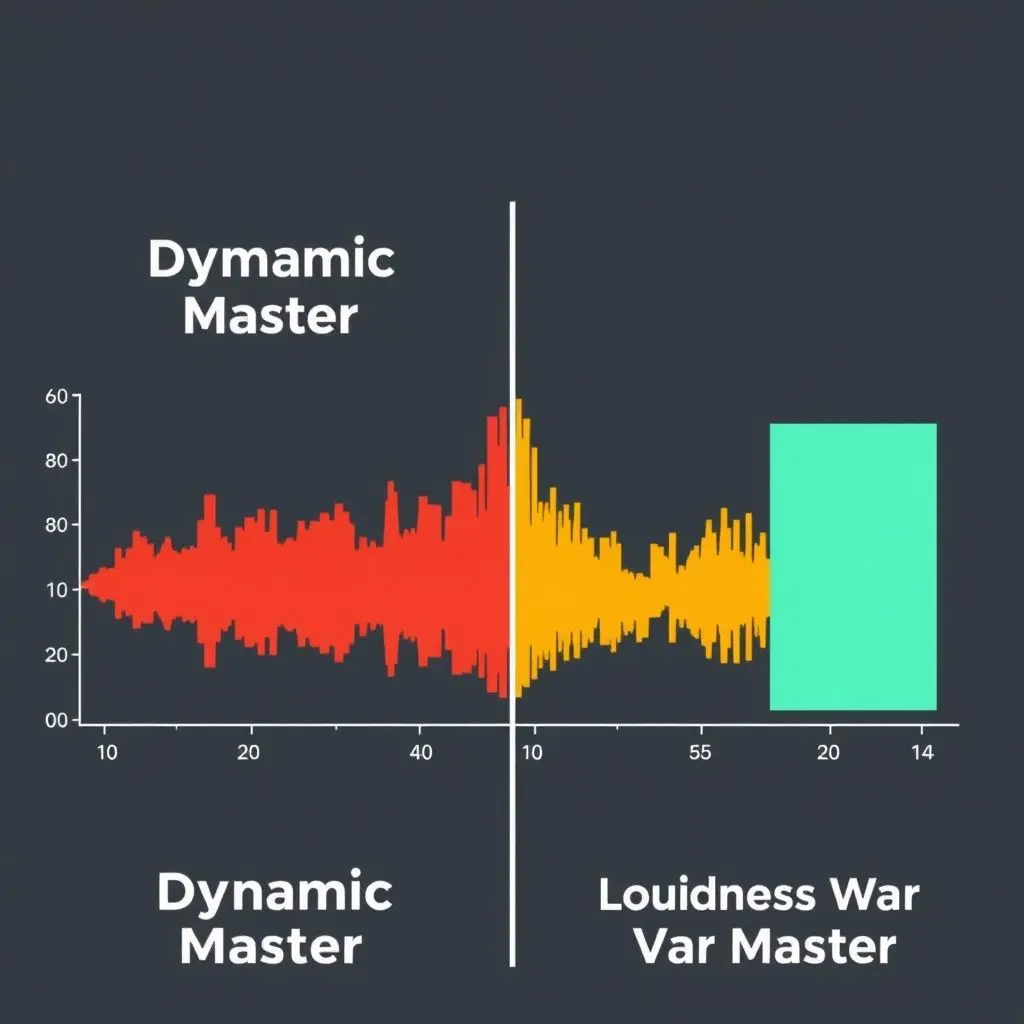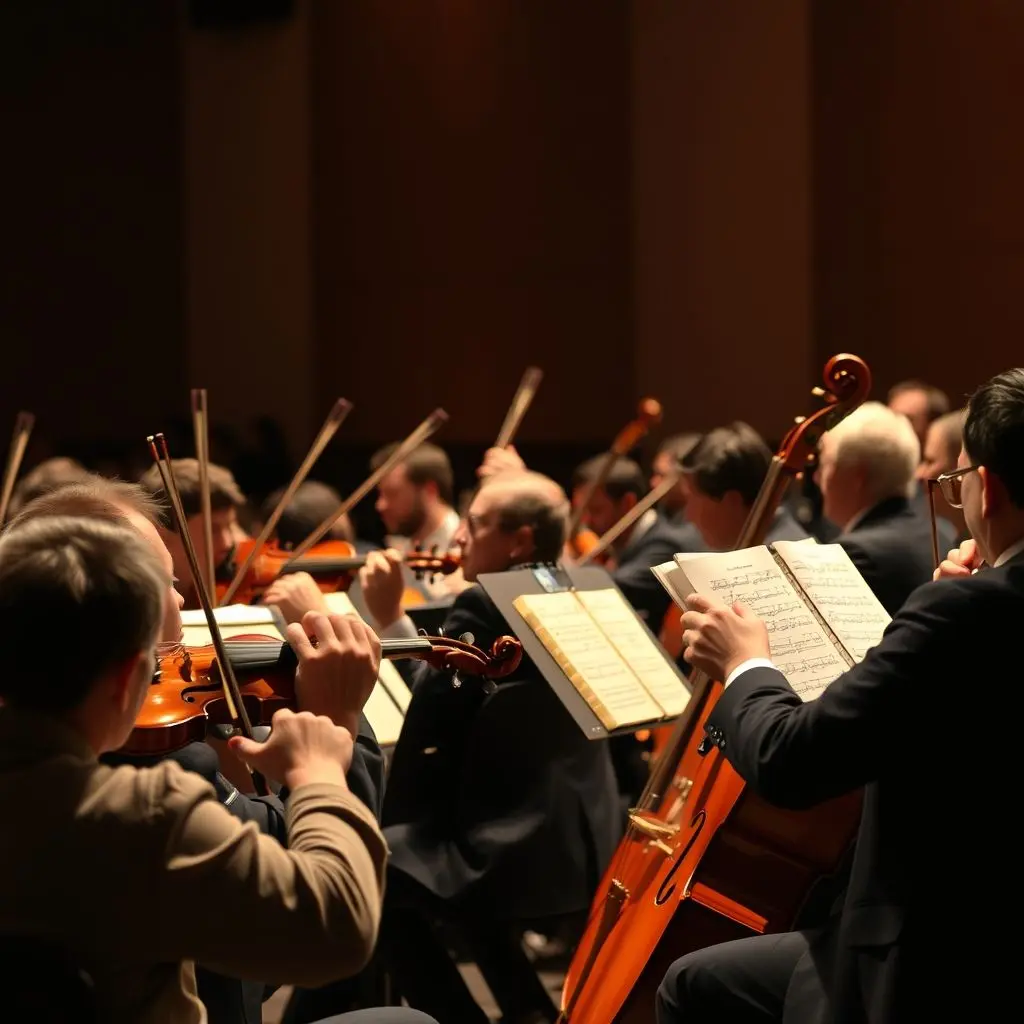Have you ever put on a favorite song, maybe one you loved for its building intensity or its delicate quiet moments, only to find it hits you like a wall of noise from the very first note? Does it feel like it’s constantly shouting, with no room to breathe, no subtle rise and fall? If so, you’ve likely experienced the lasting impact of what’s widely known as the ‘Loudness War’.
This wasn’t a conflict fought with bombs and bullets, but a battle waged in recording studios and mastering suites. Producers and engineers, under pressure to make their tracks stand out in a competitive media landscape, pushed volume levels higher and higher. The goal was simple: if it was louder, it would grab attention on the radio, dominate the jukebox, or simply sound ‘better’ than the track before it.
And the primary weapon in this war? Technology. Specifically, increasingly powerful digital audio processing tools, most notably aggressive compression and limiting. These tools allowed engineers to drastically reduce the difference between the quietest and loudest parts of a song – the dynamic range – effectively making the entire track uniformly loud.
The result? Music lost its dynamics, its punch, its subtle textures. That thrilling build from a soft verse to a powerful chorus? Often flattened. Delicate instrumental details buried. And perhaps most significantly, our ears fatigued faster, turning listening from a pleasure into a chore.
Table of Contents
What Exactly Was This “War”?
The Loudness War gained prominence primarily from the early 1990s through the 2010s, coinciding with the rise of digital audio and the CD format. While engineers had always worked to optimize levels, the digital realm offered new possibilities for extreme processing. The competition for airtime on radio, where stations often applied their own compression, fueled the desire for tracks that were already maximally loud before they even hit the airwaves.
The logic, flawed as it turned out to be, was that a louder track would be perceived as ‘better’ or more impactful by listeners. This led to a continuous escalation, where each new release aimed to be just a little bit louder than the last. This arms race of amplitude became known as the Loudness War.

The Technological “Weapons”
While various techniques were employed, the core technology driving the Loudness War was digital dynamics processing:
- Compression: A compressor reduces the volume of signals that exceed a certain threshold. It makes the loud parts quieter, effectively reducing the overall dynamic range. Aggressive compression makes almost everything loud, bringing up the quietest sounds (like breaths, room noise, or subtle instrument textures) alongside the intended audio.
- Limiting: A limiter is essentially a compressor with a very high ratio and threshold set near the maximum possible digital level (0 dBFS – decibels relative to full scale). It acts as a brick wall, preventing any audio signal from exceeding that level. To make a track louder overall, engineers would compress the audio heavily and then use a limiter to push the *average* level up as close to 0 dBFS as possible without clipping (distortion).
By applying these tools excessively, engineers could increase the perceived loudness of a track significantly, but at the cost of squashing the natural peaks and valleys that give music its life and energy. The waveform, when visualized, would appear almost like a solid block rather than a dynamic shape.
The Cost: What Was Lost?
The pursuit of loudness had several detrimental effects on the listening experience:
- Destroyed Dynamics: This is the most significant casualty. Music is often composed and arranged with dynamics in mind – a quiet bridge emphasizing a powerful chorus, subtle volume changes conveying emotion or building tension. When dynamics are crushed, the music becomes monotonous, lacking contrast and impact.
- Loss of Detail and Punch: The transient peaks – the initial attack of a drum hit, a plucked guitar string, or a sharp vocal consonant – are crucial for clarity and punch. Aggressive limiting rounds off these peaks, making the music sound less defined and impactful.
- Listener Fatigue: Constant, unrelenting loudness is tiring for the human ear and brain. Without dynamic variation, the listener has no ‘rest’ and finds it harder to focus on the music, leading to quicker fatigue and less enjoyable listening sessions.
- Increased Distortion (Sometimes): While limiters prevent digital clipping, the intense processing can sometimes introduce other forms of distortion or undesirable artifacts, especially on complex mixes.

The Ironic Twist: Normalization Arrives
Perhaps the biggest irony of the Loudness War is that as digital playback evolved, the need for excessively loud masters diminished. Streaming services (like Spotify, Apple Music, YouTube Music), digital audio players, and broadcast systems increasingly adopted volume normalization. This technology analyzes the average loudness of a track and automatically adjusts its playback volume to a target level.
What this means is that a super-loud track mastered in the peak of the Loudness War will simply be turned *down* by the streaming service to match the level of a less-compressed, more dynamic track. The engineer’s effort to be louder is negated. Crucially, however, the damage done during the mastering process – the crushed dynamics, the lost detail – cannot be undone by normalization. The normalized, overly compressed track will sound quieter, but it will still sound flat and lifeless compared to a track that retained its dynamics from the start.
It’s a stark reminder that while technology enabled the push for loudness, later technology highlighted its futility and couldn’t fully repair the harm inflicted on the audio.
Sometimes, seeing (or hearing) is believing. Here’s a quick dive into the Loudness War concept:
Is the War Truly Over?
The most aggressive phase of the Loudness War has arguably subsided. Industry awareness of the negative consequences, combined with the prevalence of normalization on streaming platforms, has shifted the focus somewhat. Many modern masters are produced with dynamics in mind, adhering to recommended loudness levels for various platforms.
However, the legacy remains. Millions of songs released during the peak of the war still exist only in their overly compressed forms. And while many engineers and artists prioritize dynamics now, the temptation to push levels for maximum perceived impact still exists in certain genres or situations.
Why Dynamics Matter Beyond Volume
Dynamics are not just about fluctuating volume; they are a fundamental element of musical expression. They create contrast, build tension, provide release, and contribute significantly to the emotional arc of a song. A piece of music without dynamics is like a story told in a monotone voice – it loses its power to captivate and move the listener.

The Loudness War serves as a cautionary tale about how technology, when applied in the pursuit of a perceived competitive advantage without considering the artistic and sensory consequences, can inadvertently degrade the very thing it aims to enhance. Louder wasn’t inherently better; it was often just flatter, more tiring, and less engaging. The push for maximum volume ultimately diminished the richness and impact of the music itself.
Frequently Asked Questions About the Loudness War
Q: Does the Loudness War only affect digital music?
A: While the digital era and CD format greatly intensified the war due to the precision of digital processing, some techniques to increase loudness were used in analog mastering as well. However, digital tools allowed for far more extreme levels of compression and limiting.
Q: How can I tell if a song is a victim of the Loudness War?
A: Listen for a lack of difference between the quietest and loudest parts. Does the song feel like it’s at the same volume level from start to finish? Does it feel fatiguing to listen to for extended periods? Looking at the waveform visualization (if you have access to audio software) can also reveal a solid block-like shape for heavily compressed tracks compared to more varied peaks and valleys in dynamic ones.
Q: Does high volume always mean it’s part of the Loudness War?
A: No. Some genres naturally have high average loudness (like certain electronic music or metal). The key factor is the *lack of dynamics* – the difference between the loudest and quietest parts being very small, rather than just the overall high volume.
Q: Does normalization fix the problem of overly compressed music?
A: Normalization adjusts the playback volume, making loud tracks quieter. It makes libraries of music sound more consistent in volume. However, it cannot restore dynamics that were removed during the mastering process. An overly compressed track will still sound flat even when turned down by normalization.
Q: Are all modern releases free from Loudness War issues?
A: Not necessarily all. While there’s more awareness and normalization encourages dynamic masters, some releases, particularly those not destined primarily for major streaming platforms or certain genres, might still be mastered with very little dynamic range. However, the trend for mainstream releases has moved towards more reasonable loudness levels.





